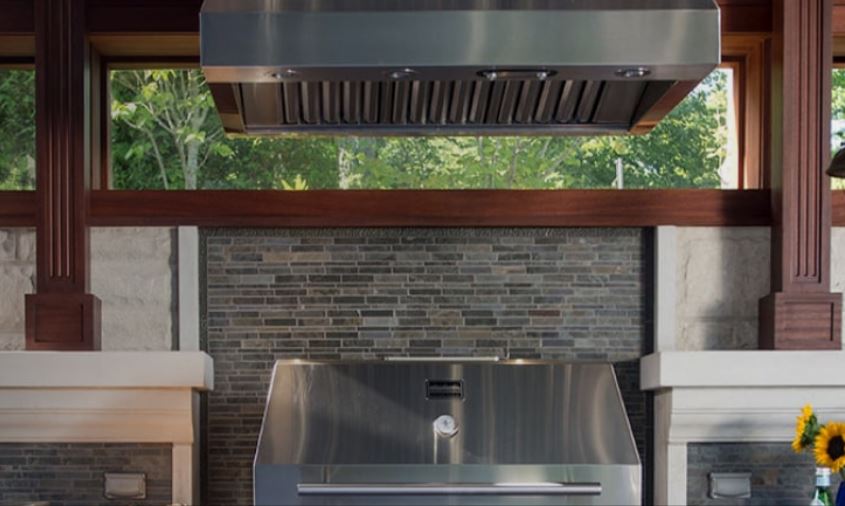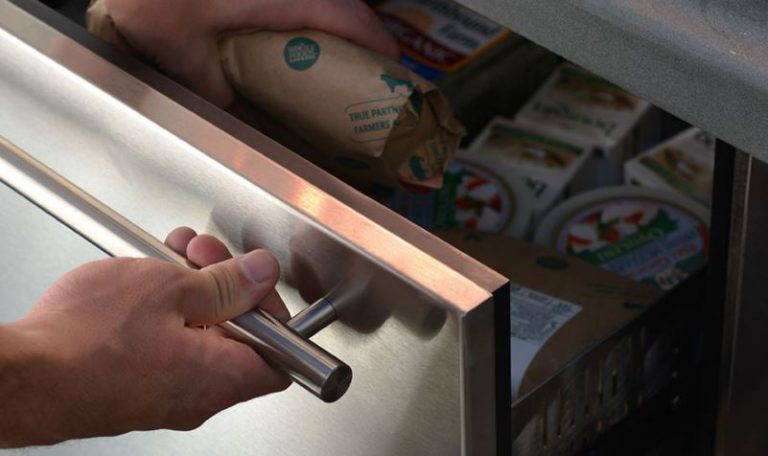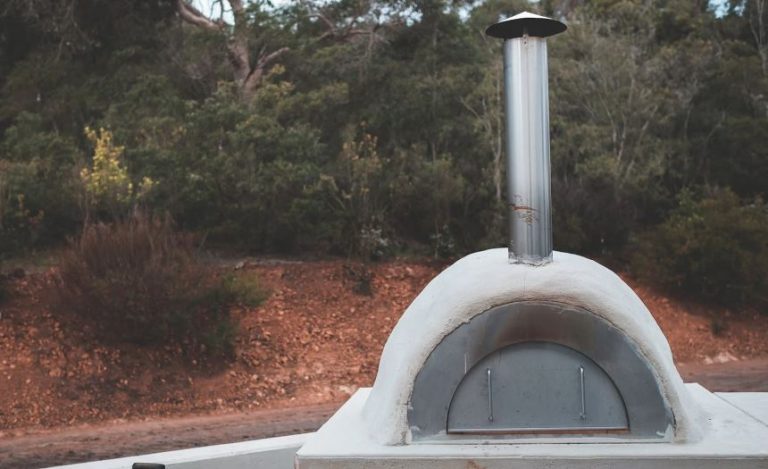Outdoor Kitchen Ventilation Requirements
Requirements for Outdoor Kitchen Ventilation
When installing and operating an outdoor kitchen, you’ll need two forms of ventilation. A vent hood is the first. The second to consider is cabinet ventilation.
Vent panels are essential if you’re putting builtin grills in a propane or natural gas environment to disperse the gas and safeguard the outdoor kitchen in the event of a leak. When designing an outdoor space with a grill, local rules may require vent hoods to clear the area of smoke, but even if they aren’t, you should definitely consider include them in your plans.
Hood Ventilation
People will congregate where there are delicious flavors and alluring aromas from your outdoor grill. Cooking or smoking a meal, on the other hand, can pollute the air. An outdoor vent hood may cleanse the air and keep the conversation flowing in your outdoor living space even if your outdoor kitchen has a back wall or a shelter.
We’ve noticed that while almost everyone likes smoky aromas in their BBQ, few people appreciate the smoke from barbecue grills lingering in their outside space.
The most reliable approach to remedy this problem is to install a vent hood above the grill, and there are several different styles of outdoor kitchen grill hoods. These things usually cover the majority or all of the grill, trapping noxious smoke and grease with a powerful fan. Smoke and grease could hurt people or other outdoor cooking appliances. Have you ever seen a brick wall covered in black soot or grease from a charcoal grill? This is the result from not having ventilation hoods in your outdoor kitchen design.
Though vent hoods aren’t required in every outdoor kitchen with barbeque grills, they are required in covered areas for proper ventilation. Some municipal building codes require them so it is worth it to check. Even if you’re establishing an open-air outdoor space, an outdoor cooking vent hood will allow you and your guests to completely enjoy their time around the grill without having to worry about extra smoke or scarred walls.
When choosing an outdoor kitchen hood, consider the following:
If your built-in BBQ grill in your outdoor kitchen is completely open on at least two sides, you may not need a hood vent.
If your ceiling is 9 feet or higher, you might be able to get away without a hood vent, but see other considerations below.
If you can tolerate a lot of smoke for 10 minutes or the entire cooking time and you are the only one that cooks with no one else around, you probably won’t want a hood vent.
If your guests don’t come near the grill when you are cooking and they are seated far, far away from the grill, you might not want a hood vent.
Is your outdoor kitchen grill located in an open air area?
Do you like the look of coordinating your grill and vent hood in your kitchen design?
Is the hood vent required in your municipality by code?
BBQ Island Vents
Ventilation systems must be installed on all outdoor kitchen islands. The explanation is simple: without vents, your outdoor kitchen island is more likely to become a victim of combustible materials. If a propane leak occurs inside the island and there are no vents to expel the gas, the gas will be trapped permanently, which is plainly bad. You might think this is self-evident, yet you’d be amazed how often it goes unnoticed.
Place many vents in an outdoor kitchen to produce a cross-flow of air for the type of gas: natural gas or propane. Place a vent panel every 4-6 feet in your outdoor cooking space as a rule of thumb, and remember that having too many vents is not a negative thing. This might be a set of vents on each side or a set on one side with a set on the backside of the cabinet structure, depending on the design of your outdoor kitchen. There should be a vent in the cabinet that holds your propane tanks. There will be a vent for the top and bottom of each side on which the vents are installed. The same is true on the other side, which has been set aside for venting. If properly built, this provides enough airflow for the gas to safely exit the structure and not gather.
The following ventilation suggestions should be considered for propane gas cylinder enclosures with four sides, a top, and a bottom.
At least one ventilation aperture should be situated within five inches of the top of the enclosure and unobstructed on the exposed outside side or rear of the enclosure. The opening(s) should be at least one inch per pound of stored fuel capacity (20 lb cylinder = 20 inches).
At least one ventilation opening should be one inch or less from the floor level on the exposed, outside side or back of the enclosure. Have at least 1/2 inch of empty space per pound of stored fuel capacity (20 pound cylinder = 10 inches).
Every opening should be large enough to allow a 1/8 inch rod to pass through.
Between the bottom of the enclosure and the ground, there must be a two-inch air gap.
The enclosure must have a door opening that allows simple access to the remote LP cylinder. The LP cylinder’s cylinder valve must be easily accessible for manual operation. When the LP cylinder is mounted to the grill, it must be positioned to allow leak checking of the cylinder, cylinder valve, and regulator.
Make sure the venting panels are installed according to what your manufacturer recommends. This will protect your investment in an outdoor kitchen. The location depends on the gas kind (natural or LP). Natural gas is lighter, thus the vent should be higher up on the island. Because LP is a heavier gas that sinks, it must be vented at ground level.
Photo: Kalamazoo Outdoor Gourmet







